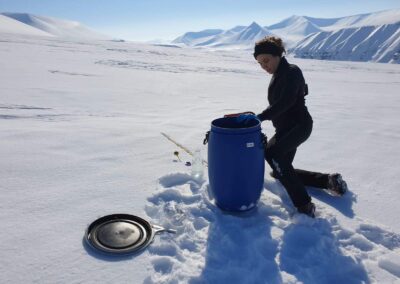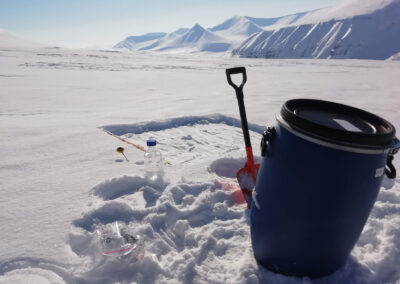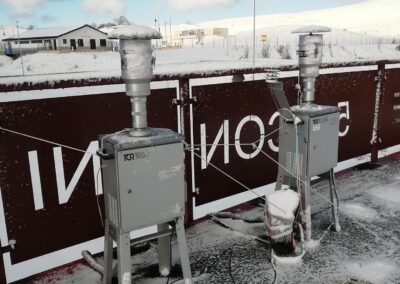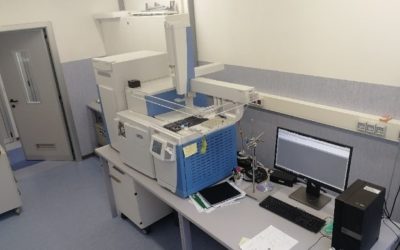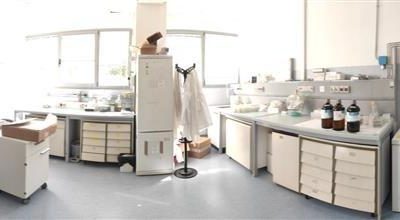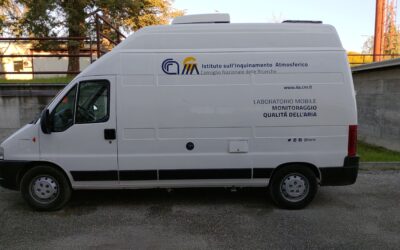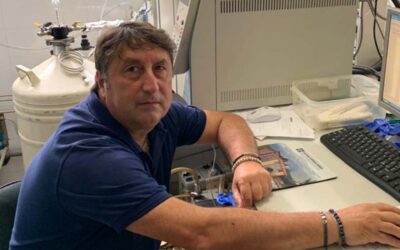Area Skills
Recently, with the development of new technologies and processes and with the improvement of the analytical sensitivity of the instruments, the interest of scientists and legislators has expanded not only to regulated pollutants and POPs, but also to new classes of substances. such as Emerging Contaminants (ECs), examples are plasticizers, new pesticides, products for cosmetics, cleaning and drugs which are often associated with effects such as carcinogenesis, mutagenesis, irritation, sensitization, and dysfunctions, of reproduction and metabolism as in the case of Endocrine Destructors (EDs). As far as the atmosphere sector is concerned, these compounds can be originated and give rise to different processes, consequently their study is considerably enriched by the parallel evaluation of the other pollutants.
Emerging contaminants are usually referred to as chemical compounds that are not currently (or have only recently been) regulated and about which concerns exist regarding their impact on human health and the environment. However, this definition leaves room for further classifications: the so-called New Substances due to the evolution of technology and industrial processes, as well as the introduction of new products (eg 3D printers); compounds defined as “Re-emerging” connected to old technologies, which have not been disposed of or removed from the environments and which, especially indoors, tend to be re-issued over time (eg PCBs); Substances that can now be identified, given the availability of instruments with high sensitivity and resolution that allow ultra-trace analysis; Substances with different evaluation, i.e. those substances whose toxicity levels are re-evaluated on the basis of new aspects and parameters related to scientific progress or also to the body in charge of evaluation (eg. IARC), with consequent continuous updates of the lists of contaminants of the Convention of Stockholm (Salthammer 2020).
Area contact person: Catia Balducci


For some of the ECs and their by-products, the potential negative effects on human health and the environment are known, for others there is little information on their ability to diffuse and transport in the various environmental matrices and on the products of their degradation. In this regard, a further variable is linked to climate changes which, with the rise in temperatures, can modify the mechanisms that regulate reactivity, degradation, transport and deposition.

Most of the scientific commitment with respect to emerging contaminants is directed towards the water sector and its ecosystem (Álvarez-Ruiz and Picó 2020; Patel et al. 2020; Čelić et al. 2021). The studies essentially aim at the definition of new identification and remediation methods (Bilal and Iqbal 2020; K'oreje et al. 2020; Naddeo et al. 2020; Oller and Malato 2021), and at the evaluation of the toxicological effects. Although the study of emerging contaminants in the first phase was mainly focused on the aqueous compartment, the atmospheric sector undoubtedly represents the largest of the environmental ones and the one that allows the exchange of all pollutants at a planetary level. With regard to atmospheric studies on ECs, those relating to arctic areas and Northern Europe in particular prevail, where most of the micropollutants tend to accumulate and settle. This favors the enrichment and therefore the identification of these compounds in these areas (Mazur et al. 2020; Xie et al. 2020) but also the impact on ecosystems (eg. Bioaccumulation, biomagnification). Starting from 2018, the commitment of scientists in relation to emerging pollutants in the atmosphere is increasing. The first multi-year research projects have brought the first results in terms of publications in the last period (Saini et al. 2020; Röhler et al. 2021). Research must address multiple aspects: the analytical determination of species (sampling techniques, development of dedicated analytical methods, libraries), the study of different atmospheric environments (urban, suburban, rural, remoto.), the study of processes (transport, breakdowns between phase, degradation and transformation), the analysis of toxicological aspects (Conde-Cid et al. 2018; Saini et al. 2019;; Chávez et al. 2020; Röhler et al. to. 2020). To these aspects must be added the problem of microplastics which arouse more and more interest due to their high levels of environmental contamination and represent a means of transport and release of “old and new” organic micropollutants in all sectors.
Research in the sectors illustrated is constantly expanding and at this stage still leaves room for the possibility of introducing the Institute at good levels.
In addition to the possibility of carrying out research in the field of emerging contaminants, the possibilities of applying the skills of the sub-area in the field of organic pollutants in general should not be underestimated: in the gaseous phase, in the particulate phase, on other atmospheric and non-atmospheric matrices. .
Research area capacity
The research area "Emerging pollutants" has research and technical personnel with high qualifications in terms of skills and responsibilities in the workplace. It also boasts prestigious resources, such as research fellows, who carry out important collaborative and support work within the area having the responsibility of the regular performance of the work and the opportunity for personal and professional growth within the IIA and of the area considered.
LABORATORIES AND INSTRUMENTS
Accurate mass spectrometry
The Accurate Mass Spectrometry Lab is equipped with an Orbitrap GC-MS mass spectrometer. The use of the Exactive GC (Orbitrap technology), allows to perform highly sensitive analyzes on targeted and untargeted compounds, combining the robustness of one ...
Air Organic Micropollutants Laboratory
The Laboratory of Organic Air Micro-pollutants (MOrA) carries out the main activities aimed at the optimization and implementation of the entire analytical process necessary for the characterization and determination of the impact of organic micro-pollutants ...
Ex Galileo mobile laboratories
Characteristics of the mobile laboratory: The mobile laboratory consists of two rooms. One larger front and one small rear compartment. The room used as a laboratory is air-conditioned, is equipped with internal lighting and is thermally insulated. It is 1.25 meters wide ...


